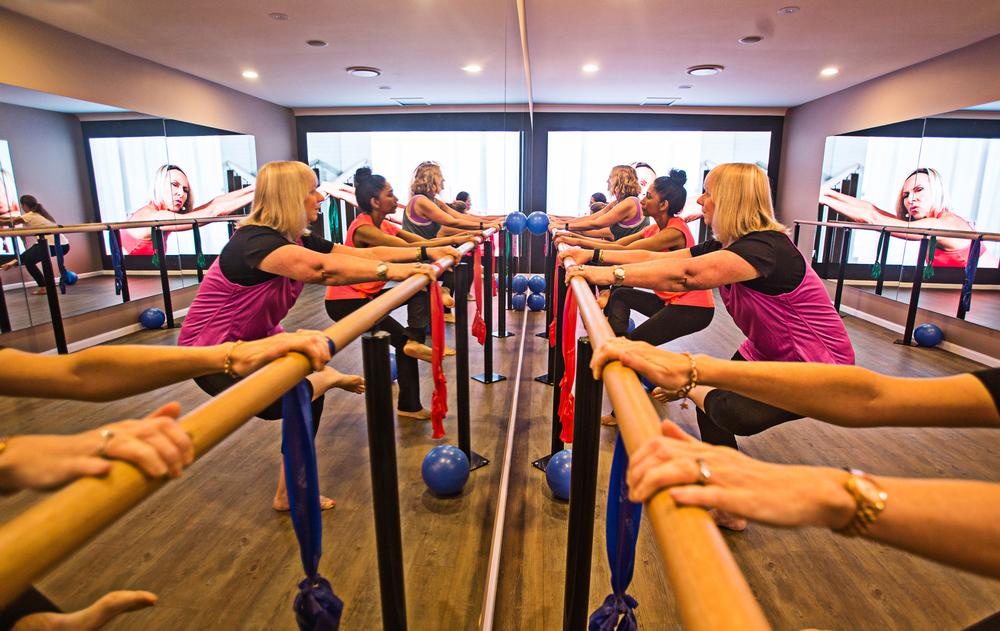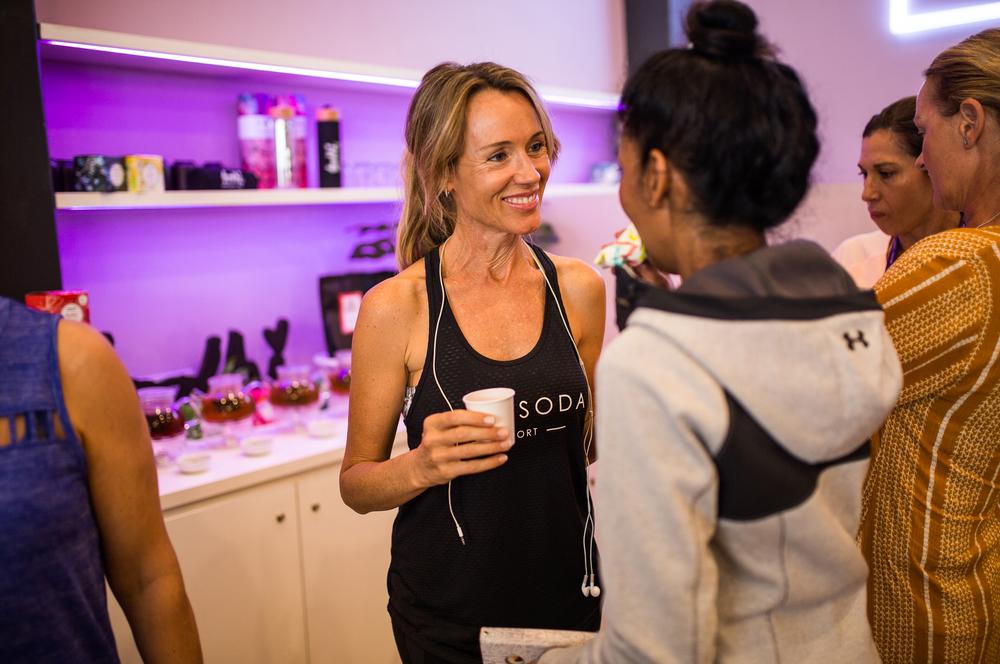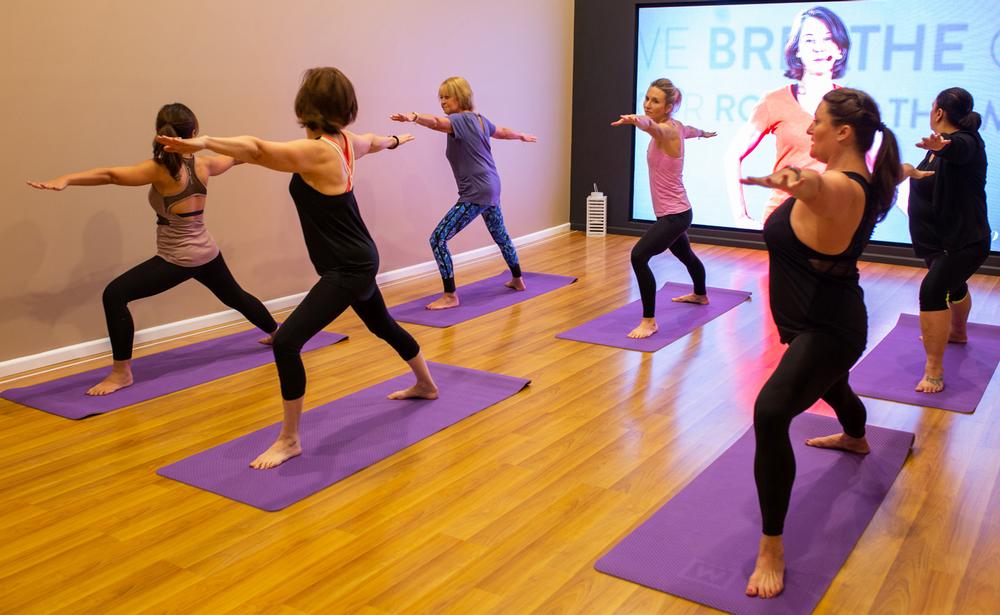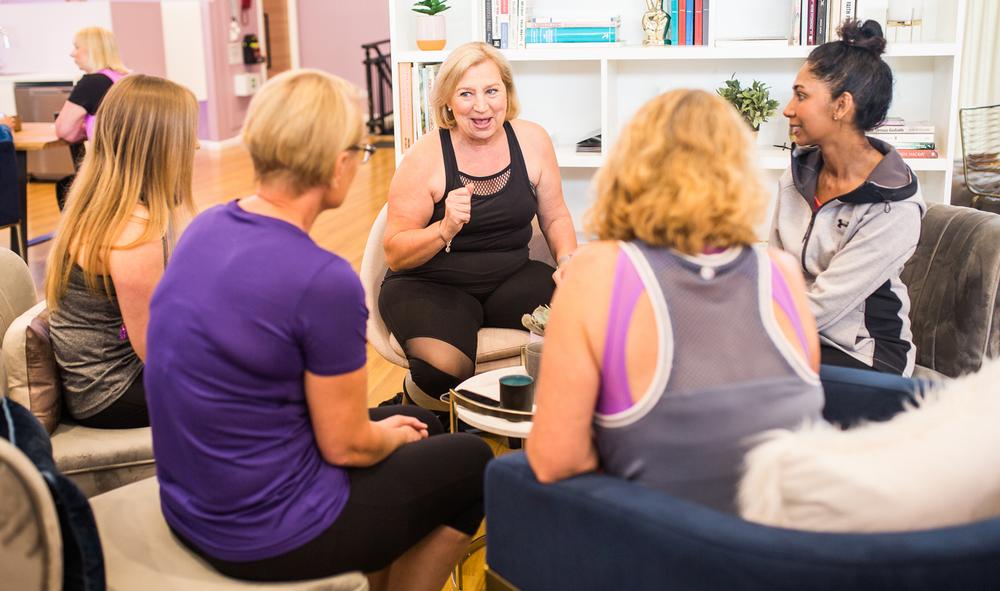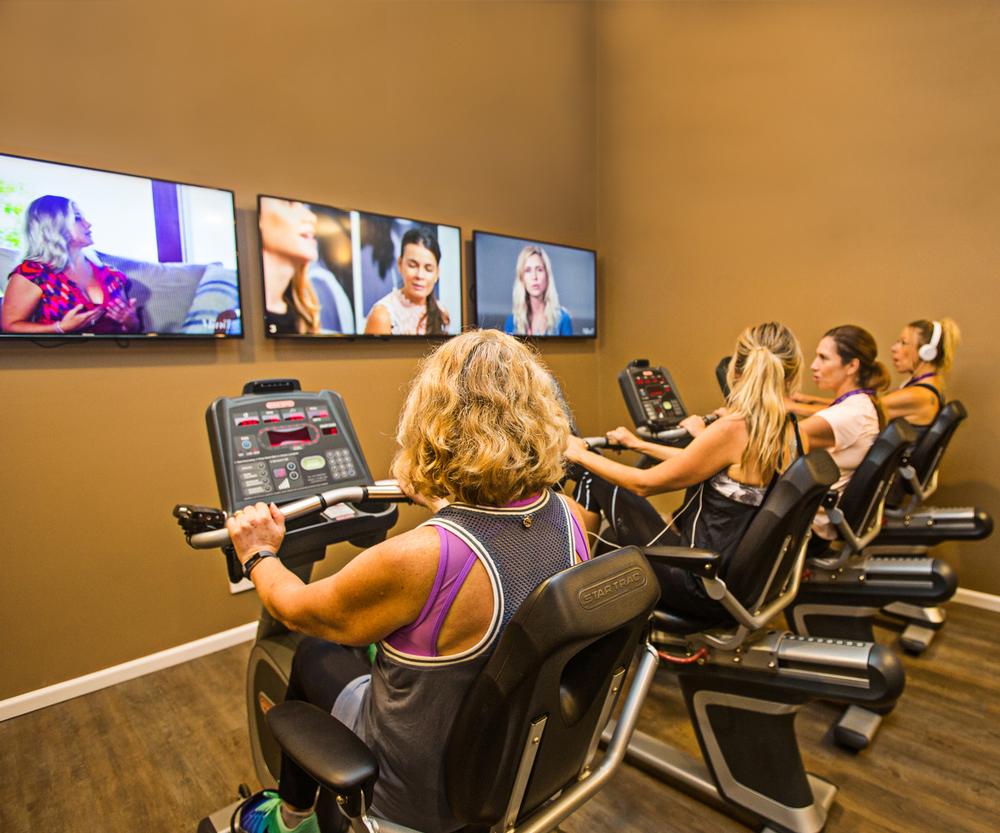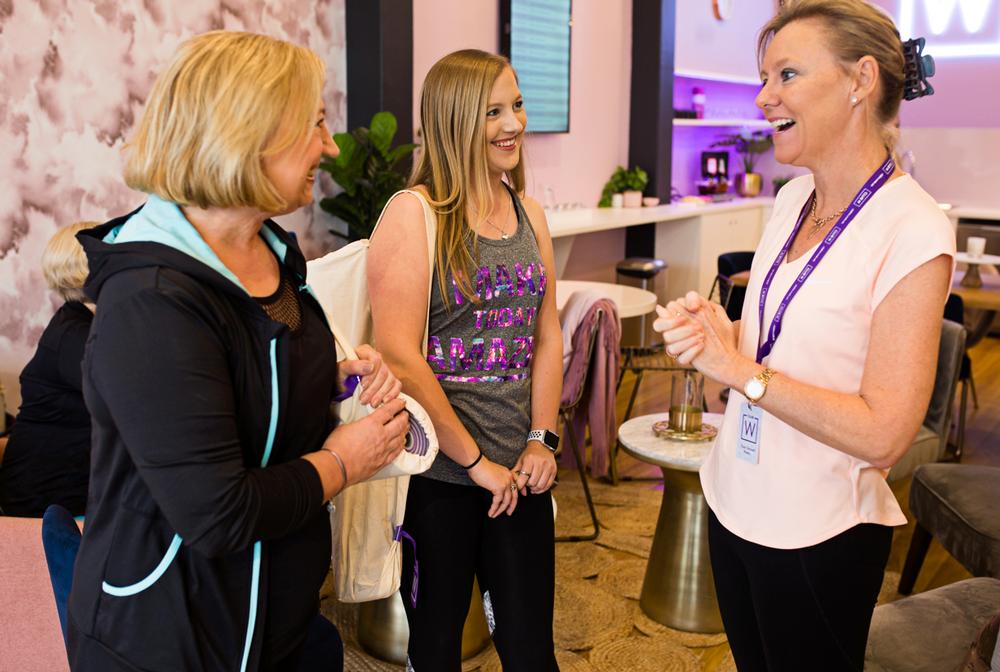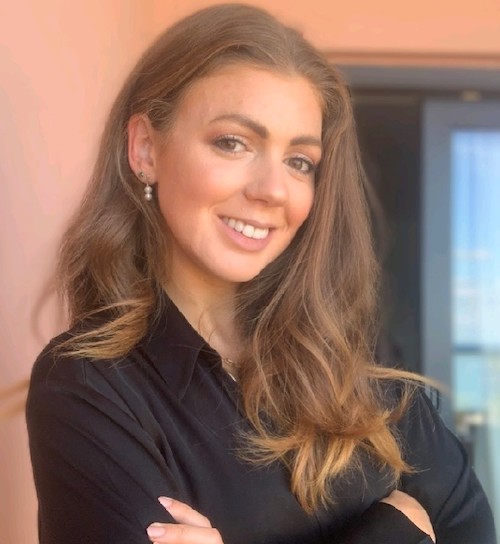There’s a forgotten generation of Baby Boomer women who didn’t grow up with fitness as we know it today, and who simply never got into it,” says industry veteran Tony de Leede.
“I have a great example: a close friend who’s 63 and has never been to the gym. At this stage in her life, she has no desire to ‘get fit’ in a traditional sense. But she wants to be well. She has back problems and heart issues, and is looking at what the next 20 years will be like for her.
“She’s also lonely. Her kids have left home, she’s split up with her husband and she craves community and conversation.
“She isn’t an isolated case; this is a forgotten generation when it comes to fitness. Over-50s now make up nearly half of the population, and they have the highest disposable income of any group. The business case is irrefutable
“Women over the age of 50 are super-consumers – in the US, they control nearly 75 per cent of all wealth – and they’re spending their money on things that improve their health and lifestyle.
“However, although many would prefer to go to a women-only club, to date they haven’t seen anything that meets their needs. This is where Club W comes in, with its mission to fill a gap in the market for a third space where women can immerse themselves in wellness. Where they can recharge, restore and connect with others. I refer to it as a second home based on community and activity, and where you feel comfortable and safe.”
Time to move
Moving more is key to the Club W concept, but it’s done in a way that isn’t intimidating. “Club W isn’t so much about being fit. It’s more focused on living longer by living well,” explains de Leede. “We don’t talk about things in the normal ‘fitness industry way’. We don’t use the word ‘exercise’, for example, instead we talk about activity and movement and use non-intimidating language.”
The first club – which opened in Sydney, Australia, in March at a cost of AU$650k – has four virtual group exercise studios. Each features a big video wall and caters for just eight to 12 people to keep things intimate, with LED mood lighting and different scents diffused into the rooms for each style of class.
These virtual studios offer a continuous schedule of Move123 classes – virtual group exercise classes, produced by de Leede and his team, which cover eight categories: yoga, pilates, stretch, strength, dance, fight, cardio and meditation. More are to come, including an imminent launch of Move Barre and Move Breathe.
Importantly, classes range from just five to 30 minutes in length, which across the four studios means the timetable features a choice of more than 200 classes a day, all delivered through the Wexer platform.
“Shorter class formats are becoming standard across all age groups,” says de Leede. “For the younger generations, the message is: ‘Forget long workouts. Go hard for 30 minutes’. At Club W, our message is simply ‘do something’, even if it’s only for five or 10 minutes. Whatever your interests, we have a class for you.”
Move123 has been designed to appeal to all age groups, with the same categories of activity available whatever your age, ability and fitness level. However, special collections – featuring older instructors and tailored exercises – have been created for the over-45s and the over-70s, with a maximum class length of 20 minutes for the latter.
And while the club is hi-tech, de Leede firmly believes virtual classes are far from intimidating for the Club W target market. “The Baby Boomer generation has already embraced social media and more – they’re not afraid of tech. Plus anyone visiting our club quickly sees the benefits of the classes being virtual: it’s this that guarantees so much choice. With more than 200 classes on offer each day, you’re guaranteed to find something that interests you within minutes of arriving at the club.”
With this tech-savvy older generation in mind, there’s also a Club W app where members can view the class schedules, book treatments – of which more later – and there are longer-term plans to introduce on-demand virtual classes and educational podcasts for at-home use.
Active education
Complementing the Move123 studios is what de Leede calls an ‘active education’ room – a gym space kitted out with treadmills and recumbent bikes, where four screens at the front of the room allow members to access a schedule of Mind123 educational programmes.
These videos – between three and 15 minutes in length, and covering the six topic areas of Health, Nutrition, Self, Relationships, Wealth and Beauty – offer lifestyle advice on a huge variety of topics, from healthy recipes and cooking tips to how to deal with menopause and children flying the nest. Created by de Leede with Club W in mind, nevertheless “as with Move123, much of the content is relevant to a wide range of ages”.
Once again the focus is on making exercise almost secondary – a by-product, rather than something to worry about – while at the same time an integral part of what’s happening.
De Leede sees Club W first and foremost as a ‘second home’, where older women can just come and be.
“Research by the National Aging Research Institute shows older people view meeting people, getting out and maintaining friendships as some of the key benefits of being physically active.
However, while men have social spaces when they retire – the golf club, for example, or the pub – women haven’t traditionally had anywhere to go. Of course, they could play golf, but the Baby Boomer generation don’t tend to, these women really don’t have anywhere to go to spend time and see friends.
“This lay at the heart of my desire to launch Club W. I wanted to create somewhere I could imagine my sister or my Mum coming – a place that offers not only movement, but also community and a range of clubs-in-club, from hobby-based sessions to charity groups. Our events have already really started to take off, from lingerie events to book clubs.”
A second home
Entering the club by either ringing the bell or using what de Leede refers to as your ‘home key’ – your membership card – you come straight into a welcoming lounge/dining area with complimentary refreshments: four different types of tea, plus still and sparkling water. It’s a space to while away the hours, not just to pass through on your way to do an activity.
Says de Leede: “You might come in with a specific class in mind. But equally, you might have some spare time and just pop in for a cup of tea. Then you’ll start chatting to other members, maybe one of our team will come round and let you know there’s a 10-minute pilates class about to start, and a few of you will think ‘why not?’ and go to the class.”
By using virtual to deliver classes, staff are free to act as hosts, welcoming people, chatting to those who might be unsure what to do, offering suggestions, accompanying people to class and so on.
At all times, there’s at least one paid club host on-site – typically someone a little older, “perhaps a former fitness instructor or a former carer”, who can offer informed advice and inspiration. “We look for part-time hosts, because we know there are women who don’t want to work full-time, but who are keen to still do something,” says de Leede.
“In addition, we’re bringing in volunteer staff to deliver our hosted model. If we identify members who are coming to the club a lot, we invite them to become a ‘club ambassador’ – to share their enthusiasm, buddying with other members, in return for the feelgood factor of being part of the Club W community. Essentially, they’re there to be a friend to new members, making them feel comfortable, introducing them to people, maybe doing a class with them – and in return, they receive a free membership that would usually cost them AU$19.50 a week.”
The inner self
Club W offers three consultation rooms, free of charge, to local businesses. De Leede explains: “There are so many consultants out there – working from home, or without a visible shop front, who specialise in everything from nutrition to naturopathy, life coaching to massage. We vet them and invite them into the club for a four-hour slot where they provide free 20-minute appointments to members.
“If they’re popular, we offer them a regular slot – in which case they can charge and there’s a fee split. Our massage room works in a similar way, with selected local therapists offered a regular day each week. They pay commission to Club W in return for the use of our room and access to members.”
A quiet corner of Club W has also been put by for relaxation, with an O2CHAIR, which teaches you to breathe and Somadomes – climb-in pods that enclose you in a world of tranquillity.
These will be installed as soon as the Somadome – one of De Leede’s investments – is available.
“It’s been shown that breathing, meditation and relaxation promote better sleep, which is critically important for body rejuvenation,” says de Leede.
“Somadome and O2 sessions will eventually be charged for through the introduction of a premium package,” he says, “But the idea is that everything is either included in the membership, or is less expensive than elsewhere.”
Expanding the concept
De Leede has ambitious growth plans, with a location in mind in Atlanta and plans to convert some of his Fit ‘n’ Fast gyms in Australia into Club Ws.
The first site measures 400sq m, but the Fit ‘n’ Fast conversions will be 1,000sq m, allowing space to grow the concept.
“Our first club has more women over 70 than under 30,” says de Leede. “However, larger locations will cater for younger women as well, by adding communal work spaces and virtual studios with a different selection of classes.”
De Leede is also in conversation with “a number of major department stores” about putting 400sq m Club Ws in-store, while franchising and licensing deals are also very much on the table to drive rapid expansion of the brand globally. As de Leede concludes: “I’m open to all opportunities to grow. This is a forgotten generation. The potential is huge.”








